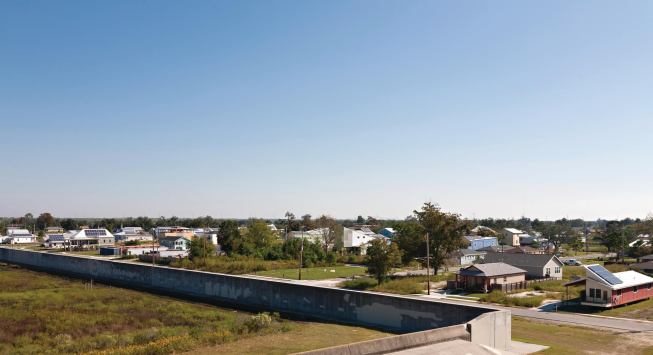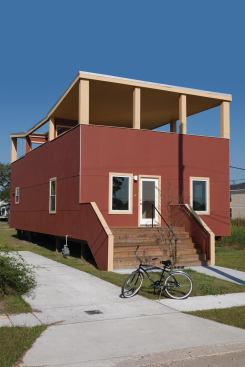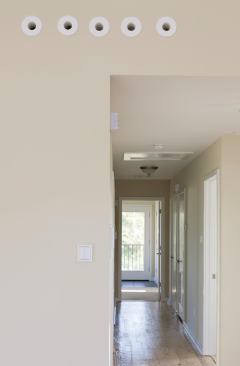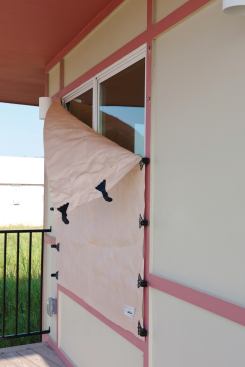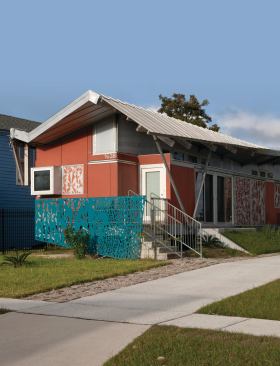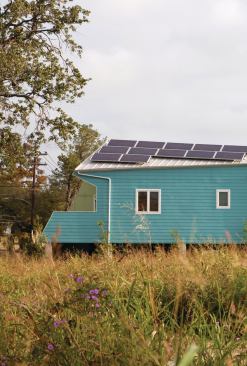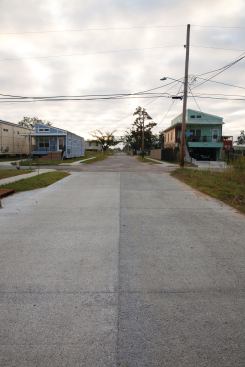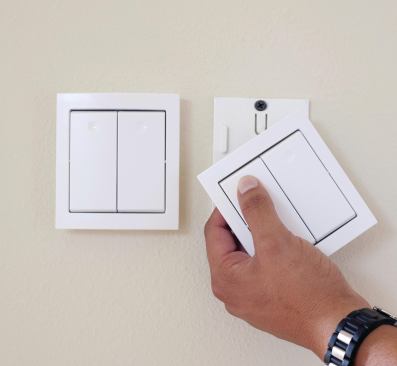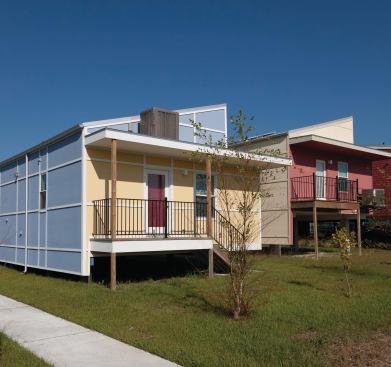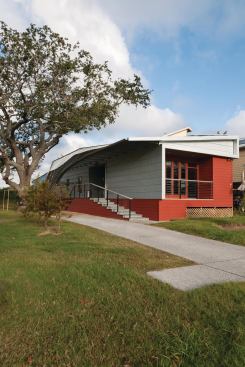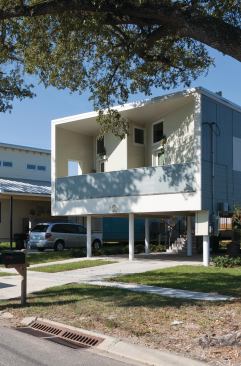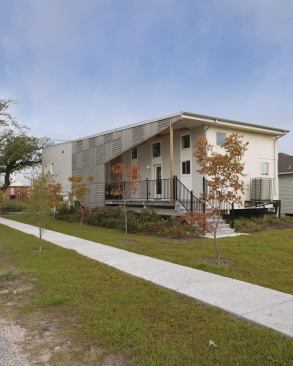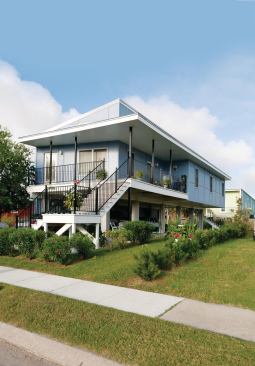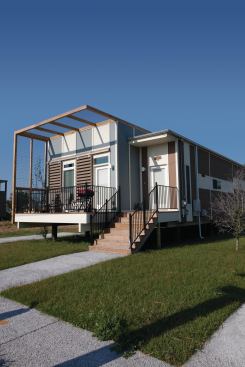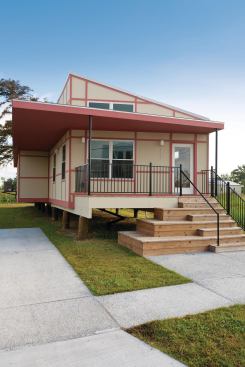Sara Essex Bradley
Triumph From Tragedy As of mid-2011, Make It Right has built 75…
Cost Control
After rushing to complete the six prototype homes by the third anniversary of Katrina, less than a year after Pitt formally pulled the trigger on the project, Make It Right got serious about cost control.
Despite taking its team of general contractors and their crews and subs out of their comfort zone of conventional building materials and methods—a recipe for budget-busting estimates—MIR negotiated fair-market pricing in exchange for walking contractors through the learning curves of advanced framing, SIPs, and modular building systems, among other new practices and products.
Meanwhile, Howell enlisted a team of engineers to redesign the elevated foundation systems of the prototypes, which everyone agreed were overbuilt (and overpriced), even for an area located 3 feet below sea level. The result cut the number of pilings and support columns in half and the cost from about $30,000 per foundation to less than $15,000 without sacrificing MIR’s structural integrity goals.
The value-engineering continued with standardized room sizes and window openings on two-foot modules, sets of plans with every detail drawn out, and on-site training by building science experts and product suppliers regarding proper installation practices. “To build as affordably as possible, we’ve optimized the designs to work with a certain type of building system,” whether advanced-framed, modular, or panelized, Howell says.
Meanwhile, systems such as mini-duct air distribution and wireless lighting controls also reduced errors and extra costs in the field. “They’re just easier to run through the framing, with fewer and easier connections,” Rodriguez says. “It’s hard to do it wrong and easier to catch and fix mistakes.”
PROFILE: Brad Pitt/Founder

Movie star Brad Pitt, Founder, Make It Right Foundation, in the Lower Ninth Ward of New Orleans for the Make a Difference, Make a Commitment cleanup of the neighborhood devastated by Hurricane Katrina.
Credit: Charlie Varley
As a film actor, Brad Pitt often plays characters who break form to achieve their goals. In A River Runs Through It, his young fly-fisherman Paul Maclean invents “shadow casting” that turns against the conventional rituals taught by his father; in his latest film Moneyball, Pitt’s brash baseball GM Billy Beane conjures a new way to evaluate players that literally changes the game going forward.
And while both of those characters are replicas of real-life people, Pitt’s not playing with Make It Right. Genuinely passionate and impressively self-educated about architecture and the environmental impact of the built world, Pitt saw a need in his adopted city of New Orleans and dove in head-first and hands-on to solve the problem in ways that challenged conventional wisdom.
“We had to start over,” he said in a CNN interview in September 2010 about the effort. “We thought we could do it better [and] give the families who live here a better life,” a directive borne from uncompromising standards that would not only restore a section of the Lower Ninth Ward, but also the dignity of its residents.
As a result, the Make It Right model makes a far greater impact than simply building better homes or even reviving a neighborhood that was left for dead. “This to me is a social-justice issue,” he was quoted as saying in a 2008 Metropolis article. “And to create something that’s equitable and fair and has respect and provides dignity for the family within is absolutely essential to rebuilding here.” –R.B.
Howell recalls resistance as she oversaw the early months of construction, especially from old-school journeymen set in their ways. “But once that journeyman got on board, he was my greatest ally because he would get all of his crews and subs to follow,” she says.
As contractors crested their learning curves, they also contributed ideas to further streamline and troubleshoot the building process, suggesting the best way to connect foundation columns to the floor framing beams and lobbying for sets of construction drawings that followed the logical sequence of construction, thus saving time and mitigating mistakes. “Once they understood it, they took off,” Rodriguez says.
By the time MIR reached the halfway point of its 150-house goal earlier this year, it had honed its costs, including soft costs such as LEED certification and the value of donations, to a competitive $130 per square foot.
“It depends on the formula you apply,” Darden says of the different ways to calculate that number. “But there’s no question that a for-profit builder could apply the same strategies and achieve the same results.”
Collins Footes moved to a house on Tennessee Street in 1968, when some residents of the Lower Ninth Ward were moving out after a disastrous flood caused by Hurricane Betsy in 1965.
Forty years later, as Katrina loomed, Footes evacuated to his sister’s house in Alabama, about 140 miles away. “When I first heard about [Make It Right], I was already planning to rebuild on my property and had contacted other builders about that,” he says. “I just wanted a regular house, but I’m glad I signed on [with MIR] because some of that stuff I might not have been able to afford, like solar panels.”
